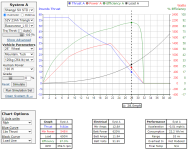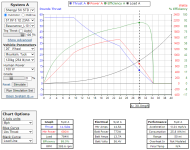Looked up OP's bike. If i'm right, it's got 27.5" wheels. I run 26" or 24".
Out of my own curiosity, i decided to see if this motor could benefit during acceleration from a 24" wheel, since it has a lack of torque.
Looks like we get a free 10ft-lbs of torque at approximately the 50% efficiency point, and cross pass 50% efficiency a bit sooner.
That's pretty substantial and should have an impact on heating during acceleration.
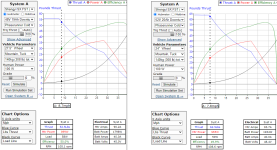
At 32.5mph cruise ( speed adjusted to be equal ), The 24" wheel is making 8 watts less heat. In this case, we're making about 130w of heat, which is probably too much for this mid sized motor.
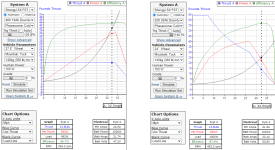
So the question remains,
how much heat can this motor shed before hitting 100c with a huge battery? Let's look at the closest sized motor we can find on ebikes.ca simulator:
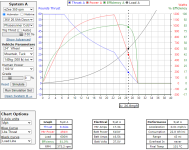
Looks like the eZee will overheat during a long ride at 116 watts of heat.
I think it would be safe to assume this motor can handle 100w of heat.. so at what speed do produce 100w of heat?
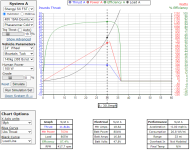
Looks like we have a 30mph capable motor. Same case in a 27.5" because the difference in efficiency is tiny.
Here's some other thoughts...
The wiring on this motor is rather thin. I see these z9 harnesses being rated for a burst current of 55A phase. I'm betting they have 18 gauge wire considering how thin they are.
If that's the case then we are losing 2.43% of our power during that 55A load. We can cut that power loss down to 0.61% by using 12AWG out the axle. The wire can now suck a few watts of heat out of the motor, because it's not being heated during acceleration, except by the motor.

The Shengyi SX2 has an identical layout to the MAC; the motor stator faces the cassette side of the case, and a majority of heat is shed through the axle. If we could somehow rig up heat sinks that sit on the end of the axles, and do this wire thickening trick, I think we could get enough thermal headroom to sustain 31mph by removing 10W of heat.
Impressive motor, certainly capable of the 30mph for very long periods of time, i want one

OP, thanks for inspiring me to look further into this motor.



